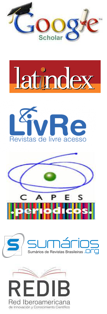Professores de Matemática no Mato Grosso: um Olhar por Meio de um Personagem
DOI:
https://doi.org/10.17921/2447-8733.2017v18n3p221-231Resumo
A pesquisa teve como objetivo discutir a formação de professores de Matemática no contexto de Mato Grosso ao final do século XIX e início do século XX. Entender quem eram os professores que ensinavam Matemática e a formação que estes possuíam é fundamental, pois foram tais protagonistas, que deram sentido para as construções do passado da matemática escolar. Para isso, lança-se mão de elementos históricos e culturais através de fontes como: leis educacionais, regulamentos da instrução pública, relatórios de presidentes da província e dos diretores da instrução pública. A partir dessas fontes se produz um discurso analítico com base no referencial teórico-metodológico associado aos conceitos propostos por André Chervel e outros autores, que compartilham do programa de história das disciplinas escolares. Por meio das análises, verifica-se não só a formação dos professores, que ensinavam Matemática ao final do século XIX e início do século XX no Mato Grosso Uno, mas também como ocorria o ensino e as reformas da época. Ainda se nota que havia grande presença de engenheiros, militares e políticos dentro das instituições públicas de ensino, principalmente, no que diz respeito aos professores, que ensinavam Matemática. Essa afirmação é notável, desde o registro que se tem do professor que assumiu uma das primeiras cadeiras destinadas a Matemática no Mato Grosso Uno, já que tal professor foi o Tenente João Baptista Castro Morais Antas, que estudou na Acadêmica Militar da Corte, tinha formação em Engenharia Civil e foi um dos primeiros doutores em Ciências e Matemática.
Palavras-chave: Formação de Professores. Educação Matemática. História da Educação Matemática. Mato Grosso.
Abstract
This research aimed to discuss the Mathematics teachers qualification in the context of Mato Grosso in the late nineteenth and early twentieth century. Understanding who the teachers who taught Mathematics were and the training they had was fundamental because they were such protagonists that gave meaning to the school mathematics past qualification. So to make this happen, e historical and cultural elements were used through sources such as: educational laws, public education regulations, reports of provincial presidents and public education directors. From these sources an analytical discourse was produced based on the theoretical-methodological framework associated with the concepts proposed by André Chervel and other authors who share the same history program of the school subjects. Through the analyzes, it was verified not only the teachers’ qualification who taught Mathematics in the late nineteenth and early twentieth century in Mato Grosso Uno, but also how the teaching and reforms of the era were given. Also, it was noticed that there was a great presence of engineers, military and politicians within the public institutions of education, especially with respect to the teachers who taught Mathematics. This statement is remarkable, since the record that we have of the teacher who took one of the first Mathematics chairs in Mato Grosso Uno was professor Lieutenant João Baptista Castro Morais Antas, who studied at the Military Academic of the Court, had training in Civil Engineering and was one of the first PhDs in Science and Mathematics.
Keywords: Teacher Training. Mathematical Education. History of Mathematics Education. Mato Grosso



